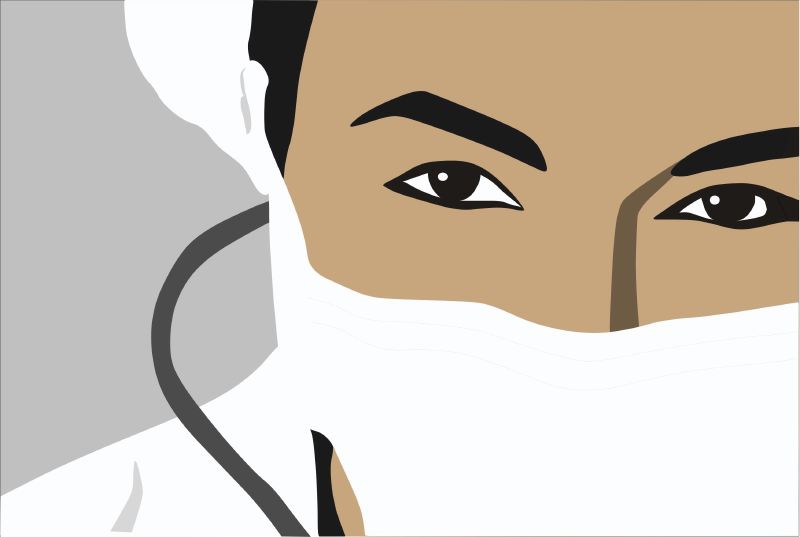
In Part 1, I set up the case that enhancing resilience programs are not just insufficient, they are at best a sticking plaster. I suggested that the problem is not a lack of yoga classes or pizza evenings. The idea that individual physician resilience, solvable only by mandatory corporate resilience programs or team-building is misguided at best. While effective physician burnout resilience programs have a place to help us get through the next shift, week, month, etc, they are not the answer we need.
The whole medical body is septicemic. It’s a systemic infection requiring systemic solutions. The source(s) of the infection needs to be identified and addressed. Whole systems approaches are needed to solve physician burnout.
Nevertheless, we need to start with fluid resuscitation and antibiotics while we await culture results (forgive me if this is medically out of date – it’s been 20 years since I worked in acute medicine. Feedback welcome!).
In this article, Part 2, I concede grudgingly that there are, however, some excellent principles differentiating ineffective from effective physician resilience programs. We hope that colleagues and medical leaders designing such programs will find the guidance useful, and further grasp the nettle of addressing the root causes of physician burnout.
The "con of individual resilience" is a distraction from addressing dangerous work conditions for doctors.
Practicing medicine has never been straightforward. It has always required attributes such as conscientiousness, dedication, endurance, courage, and (some believe) a modicum of intelligence. Doctors carry responsibility, risk, uncertainty, but also self-doubt. We make difficult decisions and witness harrowing scenarios weekly—that’s the nature of being a doctor.
And, being human, it can get to us.
In a moving session at the Australian Medical Students Association, the family of Chloe Abbott, a young doctor who died by suicide, described their loved one as being “eaten alive” by the medical profession. As a national-level athlete, Chloe did not lack resilience. Convenor of this conference, Professor Ian Hickie, stated that the “con of individual resilience” was a distraction from addressing dangerous work conditions for doctors.
So, I am not alone in concluding that resilience shifts the blame and responsibility for doctors’ struggles away from what are often over-politicized, understaffed, underfunded, badly organized systems and onto individuals.
Support to adapt and learn from these inherent challenges, and to develop coping skills, would be welcome in any stressful system, including health care.
Canaries were traditionally used in coal mines to detect toxic gases like carbon monoxide. They would initially become more distressed, then, being smaller than their human counterparts, they would drop dead. Most unlucky if you happen to be a canary.
As Dike Drummond MD writes: “If you believe … that physicians are the canary in the coal mine of medicine, then it is clear the epidemic of physician burnout is an indictment of the conditions of the mine, not the resilience of the canary.”
This metaphor is worryingly accurate, given the hidden epidemics of physician burnout, mental illness, addiction, and suicide.
Furthermore, adding or mandating a physician resilience training program, without giving staff protected time to participate, increases time demands and stress levels. Colleagues have insufficient time, energy, or bandwidth for this wondrous new initiative. Your program will be ineffective without sufficient resourcing and meaning, among other elements.
Physician burnout resilience programs are unlikely to be effective if they are:
Furthermore, expecting physicians to absorb unacceptably, and avoidably, exploitative conditions make “resilience” a “dirty word” according to a perspective in the British Medical Journal.
Poor working conditions and unreasonable expectations are to blame for physician burnout and suicide, not a grit deficiency in those who are harmed.
Poor working conditions and unreasonable expectations are to blame for physician burnout and suicide, not a grit deficiency in those who are harmed.
In contrast, effective physician resilience programs:
These are all potentially Good Things. And there are some excellent programs out there. But as we’ve stated, they cannot be used in isolation while Rome burns.
Until that time, or even in an optimal system, there is an argument for creating safe online spaces for doctors to build up their own resilience.
Initiatives elsewhere such as the Point of Care Foundation’s Schwartz Rounds, designed to help doctors reflect on difficult clinical situations, are welcome, as are sabbaticals or protected time for development activity.
Similarly, there is evidence that Positive Leadership Walk Rounds (PosWR) — an organizational practice in which leaders conduct rounds and ask staff about what is going well, their well-being and the organization’s safety culture —
Development of country and specialty-specific peer-support programs as supported by the AMA, CMA, and BMA, are welcome, too.
Safe, anonymous, confidential. No name, no shame. No state license number required. No reports to your superiors. Just docs supporting docs. " - Physicians Anonymous
In the meanwhile, we need to support each other in secure doctor-only spaces, until our workplaces become safe.
If you would like to talk to other physicians in confidence, consider our Physicians Anonymous FREE doctor-only Peer Support Groups.
Or check out our Physicians Anonymous Approved Coaches and Mentors who have awesome experience in helping physicians just like you.
Safe, anonymous, confidential. No name, no shame. No state license number required. No reports to your superiors.
Just docs supporting docs in safe spaces.
